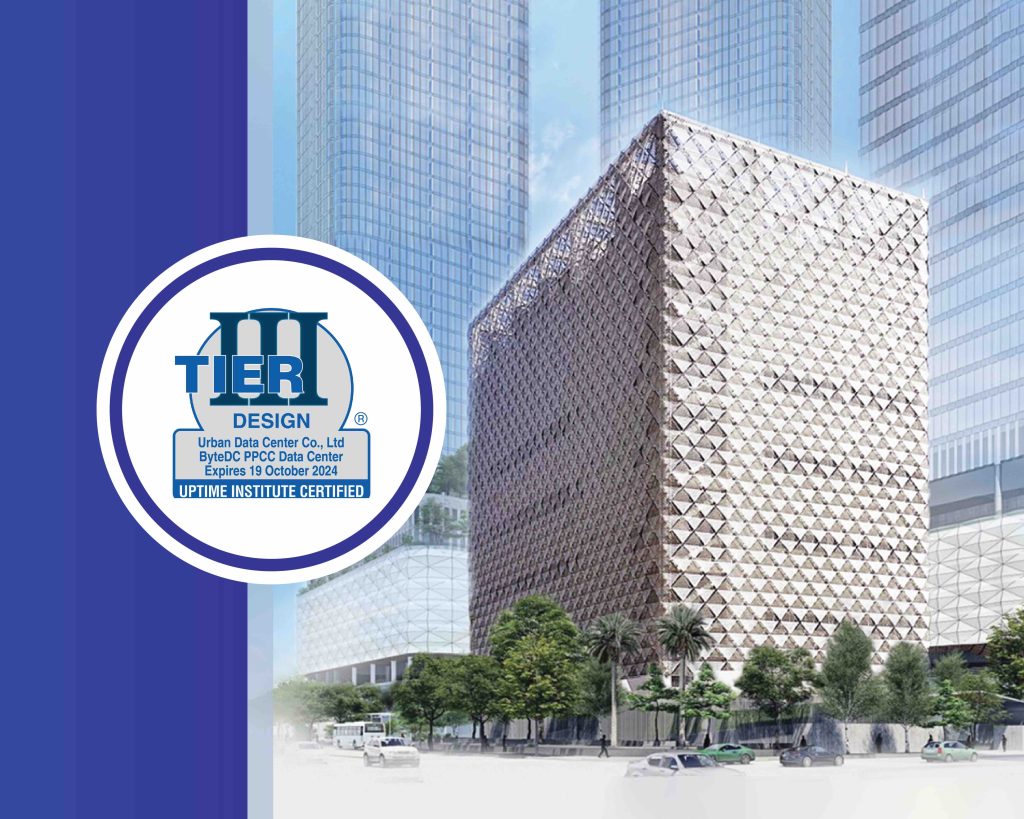
BYTEDC - The first facility of its kind in Cambodia to achieve the prestigious Tier 3 Uptime Design Certificate.
BYTEDC Data Center offers a compelling advantage in today’s digital landscape. The facilities provide a middle ground between Tier 1 and Tier 4 data centers, striking an ideal balance of reliability and cost-effectiveness. One significant benefit is redundancy, with multiple power and cooling sources ensuring 99.982% uptime (1.6 hrs of downtime annually).
The prominence of the Tier 3 data center is a favored spot in the data center classification system with the advantages that cater to the diverse needs of modern businesses.
In current times of the digital age, data is everything to power customer interactions to decision-making processes for businesses. With the exponential growth of data, the demand for secure, reliable, and cost-effective data storage and processing solutions has never been higher. This is where Tier 3 data centers shine. A Tier 3 data center occupies a significant position in this spectrum, offering an enticing balance between reliability and cost-effectiveness to become the backbone of businesses.

Reliability
Tier 3 data centers have the advantage of unmatched reliability. They are engineered to deliver 99.982% uptime which is a staggering level of assurance. This staggering availability is achieved through meticulous planning, robust infrastructure, and redundancy in critical systems, ensuring that if one component fails, another takes over seamlessly without causing downtime.
In other words, this means that BYTEDC is highly resilient and can continue to operate efficiently, even during maintenance or equipment upgrades. Such reliability is crucial for businesses that rely on uninterrupted services and cannot afford costly downtime, especially where digital services drive revenue and customer satisfaction.

Maintainability
In contrast to their lower tiered counterparts, Tier 3 data centers offer concurrent maintainability. This means that maintenance and repairs can be performed on critical infrastructure components without impacting the operations of the data center. This assures and maintains trust in the service provided to the customers.

Cost-Efficiency
While Tier 4 data centers provide the highest level of fault tolerance, they often come with a hefty price tag. Tier 3 data centers strike a harmonious balance between reliability and cost-effectiveness, making them a sensible choice for numerous organizations.
The reduced infrastructure complexity of Tier 3 facilities, compared to Tier 4, lowered the construction and operational costs which are passed down as savings for the customers. This cost-effectiveness is tailored to support SMEs that may not have the budget for Tier 4 data centers but still require a reliable data storage and processing solution.

Flexibility and Scalability
With the ever-evolving landscape, data management needs to keep up. Tier 3 data centers offer both flexibility and scalability to adapt to these changes. Organizations can commence with a smaller data center footprint and expand their infrastructure as their requirements grow.
This ensures that businesses can invest within their budget in data center resources, saving on upfront costs. As the business grows, they can adjust and scale to meet the demands as a cost saving solution.

Energy Sustainability
Being environmentally conscious, energy efficiency is a crucial consideration for BYTEDC. The data center is designed for energy-efficiency by employing modern technologies and best practices to reduce power consumption while maintaining high performances in operations.
Energy usage optimization help organizations minimize their carbon footprint and reduce operating costs. This commitment to sustainability aligns perfectly with the growing emphasis on green initiatives and corporate responsibility.

Colocation
Colocation offers numerous advantages to businesses seeking efficient and affordable IT infrastructure solutions. Businesses can easily expand their IT resources by adding or removing servers and equipment as needed, without the constraints of space and infrastructure management.
A significant benefit is cost-effectiveness, as colocation allows companies to share the expenses of facility maintenance and management with other tenants. This cost-sharing model reduces expenditures associated with building and operating a private data center.
Furthermore, businesses gain access to top-tier network connectivity and often multiple internet service providers, ensuring high-speed and reliable connections. This connectivity is essential for efficient data transfer, application performance, and disaster recovery.
Conclusion
In conclusion Tier 3 data centers have emerged as a compelling solution, offering exceptional reliability, concurrent maintainability, cost-efficiency, scalability, and energy efficiency. While Tier 4 data centers provide higher levels of fault tolerance, Tier 3 facilities are more budget-friendly without sacrificing critical reliability.
For businesses looking to optimize their IT infrastructure, BYTEDC represents a strategic choice, combining reliability, affordability, and operational flexibility.
To learn more about BYTEDC Tier III Data Center: www.bytedc.co